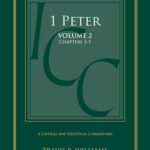What Is Marriage?
 What Is Marriage? by Sherif Girgis, Ryan T. Anderson, and Robert P. George is an important book. It is based on a 40-page article penned by the three authors published in 2010 in the Harvard Journal of Law and Public Policy. The present volume is a 110-page expansion of the same argument. What Is Marriage? argues for the traditional view of marriage, which it calls the conjugal view, over against the revisionist view.
What Is Marriage? by Sherif Girgis, Ryan T. Anderson, and Robert P. George is an important book. It is based on a 40-page article penned by the three authors published in 2010 in the Harvard Journal of Law and Public Policy. The present volume is a 110-page expansion of the same argument. What Is Marriage? argues for the traditional view of marriage, which it calls the conjugal view, over against the revisionist view.
The conjugal view of marriage has long informed the law—along with the literature, art, philosophy, religion, and social practice—of our civilization (see chapter 3). It is a vision of marriage as a bodily as well as an emotional and spiritual bond, distinguished thus by its comprehensiveness, which is, like all love, effusive: flowing out into the wide sharing of family life and ahead to lifelong fidelity. In marriage, so understood, the world rests its hope and finds ultimate renewal. (1)
A second, revisionist view has informed the marriage policy reforms of the last several decades. It is a vision of marriage as, in essence, a loving emotional bond, one distinguished by its intensity—a bond that needn’t point beyond the partners, in which fidelity is ultimately subject to one’s own desires. In marriage, so understood, partners seek emotional fulfillment, and remain as long as they find it. (1–2)
This revisionist view of marriage, as its name implies, is a rather modern invention that is now embraced by our modern anti-Christian culture and is essential to the push for same-sex marriage. The authors make the best case possible for the traditional view of marriage apart from biblical revelation, what is commonly called the natural law defense of marriage. The authors demonstrate that the revisionist view has no basis for confining marriage to just two people. If same-sex marriage becomes the law of the land, the legalization of polygamy will not be too far behind.
The arguments in this book are impressive, but unfortunately are unlikely to be that persuasive to the “natural man.” Nevertheless, those who are interested in the debate about marriage that is taking place in the public square will not want to neglect this book.


